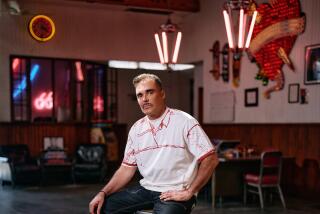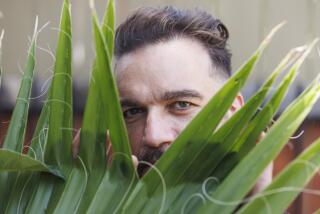Harvey Keitel’s a celebrity, right?
Being a member of the paparazzi was a lot like being a fisherman. I recently trolled the streets of Beverly Hills for a celebrity, at times feeling completely bored, before feeling the mad, addictive rush of a big strike.
“There’s one!” shouted Times photographer Don Kelsen, the words equivalent to that a marlin fisherman yelling, “Hook up!”
I scanned the sidewalk and there was Harvey Keitel, walking down North Rodeo Drive, shopping bag in hand.
My guide, Henry Flores -- co-owner of Buzz Foto -- whipped his car to the curb and parked in a red zone.
“Let’s go!” he yelled, and we bailed out, cameras blazing.
I initially felt a little dirty chasing one of my favorite movie stars -- an Oscar nominee at that -- past the storefronts of Christian Dior, Ferragamo and Fendi. But that unclean feeling was scrubbed away by the adrenaline and questions bouncing around in my head: Will I get the photo? Will the photo sell? Will Keitel, who looked a little angry, pop me in the mouth?
This was, after all, the man who specialized in playing tough characters such as Winston “The Wolf” Wolfe in “Pulp Fiction,” the title role in “Bad Lieutenant” and Mr. White in “Reservoir Dogs.”
Flores, whose agency’s motto is “paparazzi as an art form,” assured me that no one would lay a hand on me. He explained that any celebrity who appeared on the paparazzi-infested streets of Beverly Hills, West Los Angeles, Santa Monica and Malibu wanted to be photographed to further his career.
“They could just as easily go to Culver City to shop,” he said, “and I guarantee they wouldn’t be photographed there.”
Flores, 34, who once designed defense systems for fighter jets, has used his engineer brain to create a grid that he drives daily to capture images of celebrities on film and video. These streets included Sunset, Wilshire, Santa Monica, San Vicente, Montana and Robertson boulevards, Rodeo Drive and Melrose Avenue.
While scanning the sidewalks and slowing to look inside shops, Flores also worked his Bluetooth cellphone, speaking in Spanish to various sources. He has tapped into the Westside’s service industry, using valets, busboys and other workers as celebrity spotters. In exchange, he gives them tips that sometimes exceed their weekly paychecks.
“You only need two things to be a paparazzo: patience and a camera,” Flores said.
Now it was my turn. I ran about 20 yards ahead of Keitel, pointed my camera at him and clicked away. Stone-faced, he walked purposefully ahead, passing within inches of me. I repeated the process and reeled off more photos. I’m not much of a photographer, so I relied on the magic of my camera’s auto-everything.
Sweat formed on my head, and my hands shook as I steadied the camera. It was that fisherman feeling, the thrill of landing the big fish, that had infused me. Nothing mattered but getting the shot. After a block of leapfrogging ahead of Keitel, Flores called me off, saying we had enough images.
As we walked back to the car, he looked at my 20 digital photos. Most of the pictures were either out of focus or poorly framed. My heart sank. But he stopped at one.
“This could work,” he said.
It was a strangely proud moment. I asked him what tabloids would buy it. He said gently that Keitel was too old to attract the attention of tabloid and magazine editors, but the shot might fetch a couple hundred dollars from East Coast papers.
“You know, newspapers have an older readership that might be interested in him,” Flores said.
That at least gave me some hope, but the words of Flores’ business partner, Brad Elterman, kept nagging at me. A few hours before, he told me the key to being a successful paparazzo: “You need to find a young celebrity to photograph. Youth sells.”
Over the next few days, Flores couldn’t find a buyer for the Keitel photo. At 68, one of the great actors of our time was deemed too old by the tabloid and newspaper crowd. I failed at being a paparazzo. I had taken a celebrity photograph that no one wanted to buy.
If Keitel was a fish, I’d have to throw him back.
Next Tuesday: William Lobdell tries out as a conservative talk radio show host and gets pummeled by callers.
More to Read
Sign up for Essential California
The most important California stories and recommendations in your inbox every morning.
You may occasionally receive promotional content from the Los Angeles Times.










